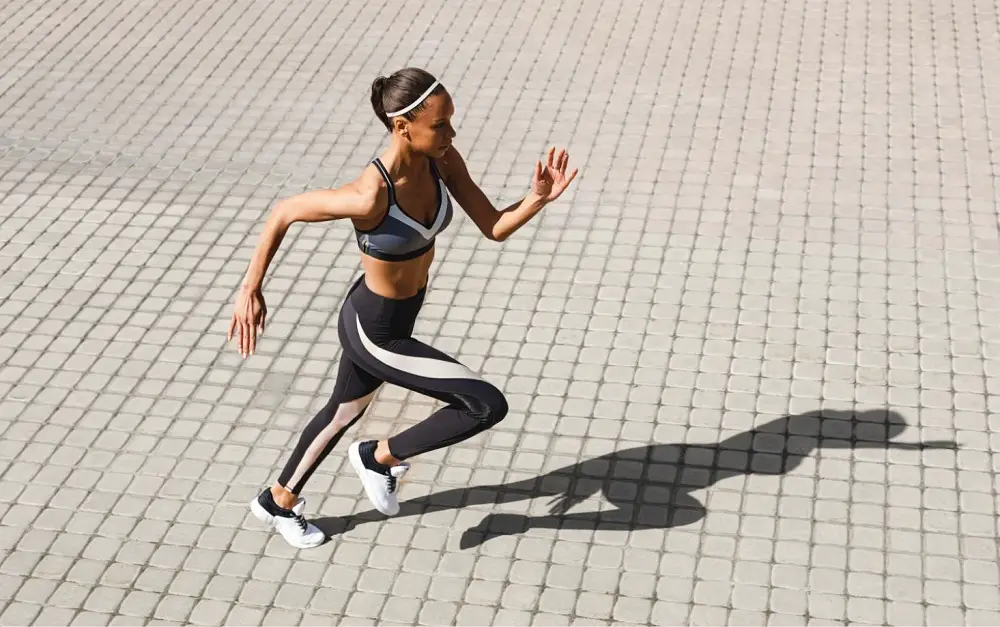Chafing is the one thing that almost all runners fear and it affects a surprising number of runners, even those who are well prepared for the problems it can pose.
There’s no escaping the fact that running has a lot of repetitive movements and this can cause a lot of friction, which can cause blistering and painful sores that can be incredibly debilitating.
While it seems like an unavoidable reality of a runner’s life, there are many things you can do to help prevent or drastically reduce chafing, and many of these solutions are relatively simple and can be combined to hugely reduce soreness or chafing altogether.

In this guide, we’re going to highlight the best solutions you can use to avoid chafing, to help you run with confidence, and focus on your personal best instead of pain and discomfort.
What is Chafing?
Quite simply, chafing is soreness of the skin that is caused by friction. Most commonly this is caused by fabric running on the skin enough to create a friction burn, or breaking the skin entirely. Chafing is incredibly discomforting and can be enough to cause serious pain, depending on where the actual chafing occurs.
One of the most common types of chafing runners suffer with is nipple rash or runners nipple as it is sometimes known.
This is caused by fabric rubbing the nipples of the runner, causing soreness and inflammation on one of the most sensitive and exposed parts of the body. The pain this causes is truly awful and can be exacerbated by the tendency for nipples to spasm and change in size according to temperature, arousal, and other external factors.
Another type of chafing is blistering, and while many people may forget about this, it’s as serious as any other form of chafing and comes from the same place. Poorly fitted running shoes or a poor choice of running socks can cause terrible blistering on various parts of the foot from the achilles tendon to the toes and balls of the feet. This type of chafing is often enough to stop runners in their tracks and completely derail your training regime.
There are other forms of chafing too, but these are by far the most common suffered by runners.
Now, let’s take a look at some solutions to these problems!
Use Lotion
One of the most obvious preventative measures against chafing is lubrication. This can help reduce the friction that causes chafing and form a protective layer to stop the skin from being in direct contact with the movement of the fabric that causes the chafing.
Some popular choices are Vaseline, which is a very common lubricant and protective salve, as well as BodyGlide which is specially formulated specifically for running and is an excellent choice for more intimate areas or sensitive skin due to its hypoallergenic nature.
These lotions can be used on areas such as the nipples as well as the groin, and will do an excellent job of significantly reducing or eliminating chafing as long as they are applied properly.
Use Powders
Another solution similar to lotions are powders, and they can help to prevent chafing before it starts. Powders act similarly to lotions but are a different consistency and maybe better for other parts of the body such as the feet or groin. They are better for these areas because powders help to absorb sweat, which can be a big contributor to chafing, and this will help reduce chafing hugely along with the protective layer the powder forms over the skin.
Popular options are talcum powder, however, there are many other excellent alternatives such as Silky Underwear by Lush and other powders designed to help reduce or eliminate chafing.
Wear Tight or Well Fitted Running Attire
Wearing running gear that fits properly is another critical point in the prevention of chafing, and this can eliminate chafing altogether if used properly or in conjunction with other solutions.
Always wear running shoes that fit correctly and that are well broken in, as well as proper running socks that aren’t too big to prevent bunching and blistering inside the shoe.
Avoid shirts with large badges or stitching on the chest area or the underarm areas as this can cause terrible blistering and nipple rash. It’s also best to make sure your running attire is made of polyester or nylon which is much smoother and less fibrous, and far less likely to cause chafing.
Finally, a good pair of running leggings or compression shorts can also have a huge impact on your chafing, and can particularly help prevent it in the groin area which can be a troublesome spot due to its sweatiness and the amount of friction that occurs there.
Stay Well Hydrated
This is one of the lesser-known tips, but it’s very important and easy to follow. The saltier your sweat is, the more likely you are to chafe as the salt is left on your skin as your sweat evaporates, causing irritation and dryness. It can even sting on some occasions and make the pain of chafing much worse than it already is.
To avoid this, hydration is the key, and this is the case because the more hydrated you are, the higher the water content of your sweat will be and the lower the salt content.
It’s a simple fix and is something that most disciplined runners should stay on top of anyway to avoid cramping and dehydration, but for beginners or those who don’t know, this is a critically important part of running and one that shouldn’t be ignored.
Final Thoughts
To summarise, chafing is one of the banes of any runner’s life, but there’s no need to suffer endlessly with this problem. Combine a few of these solutions and start running in comfort and confidence again, without fear of chafing and the awful pain it can cause.

